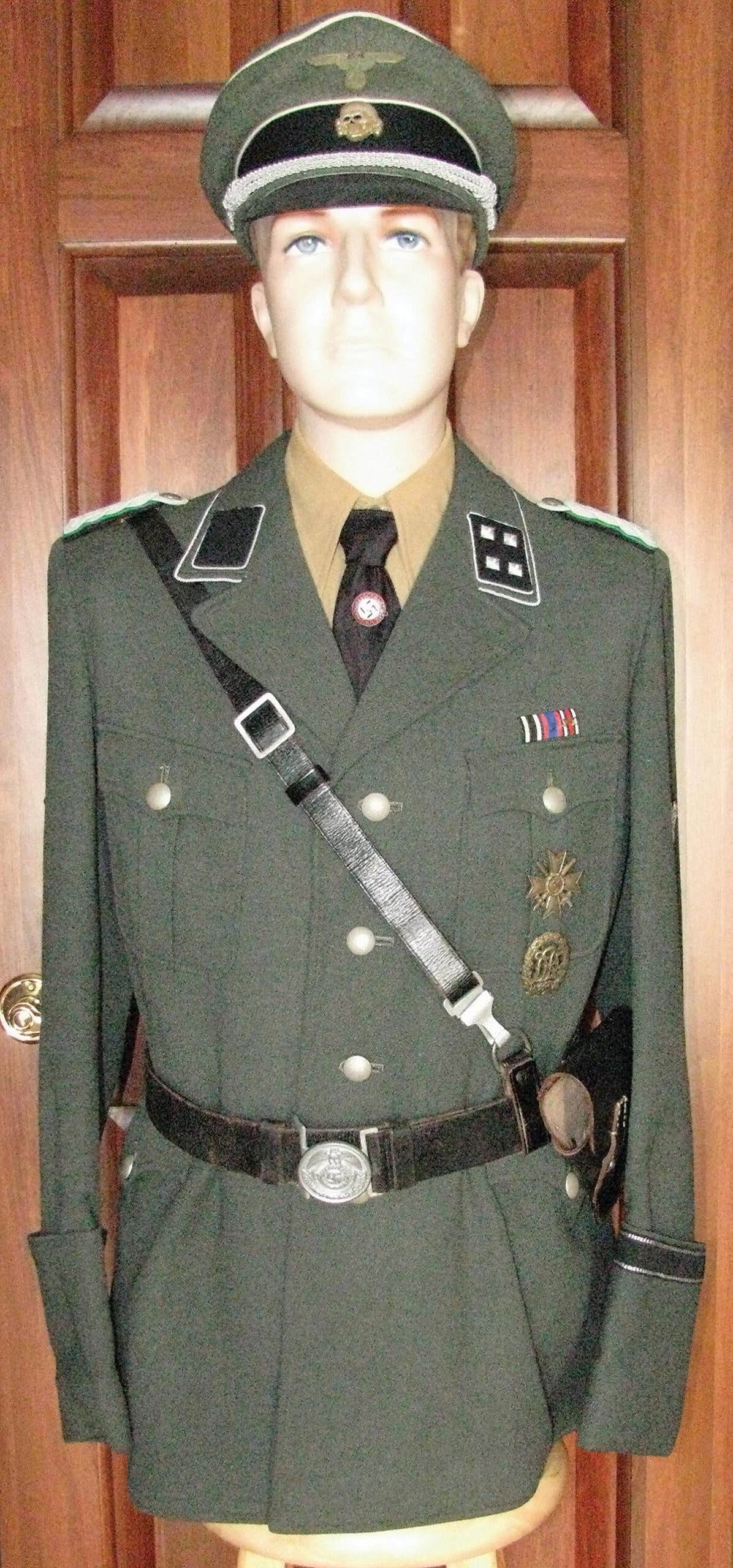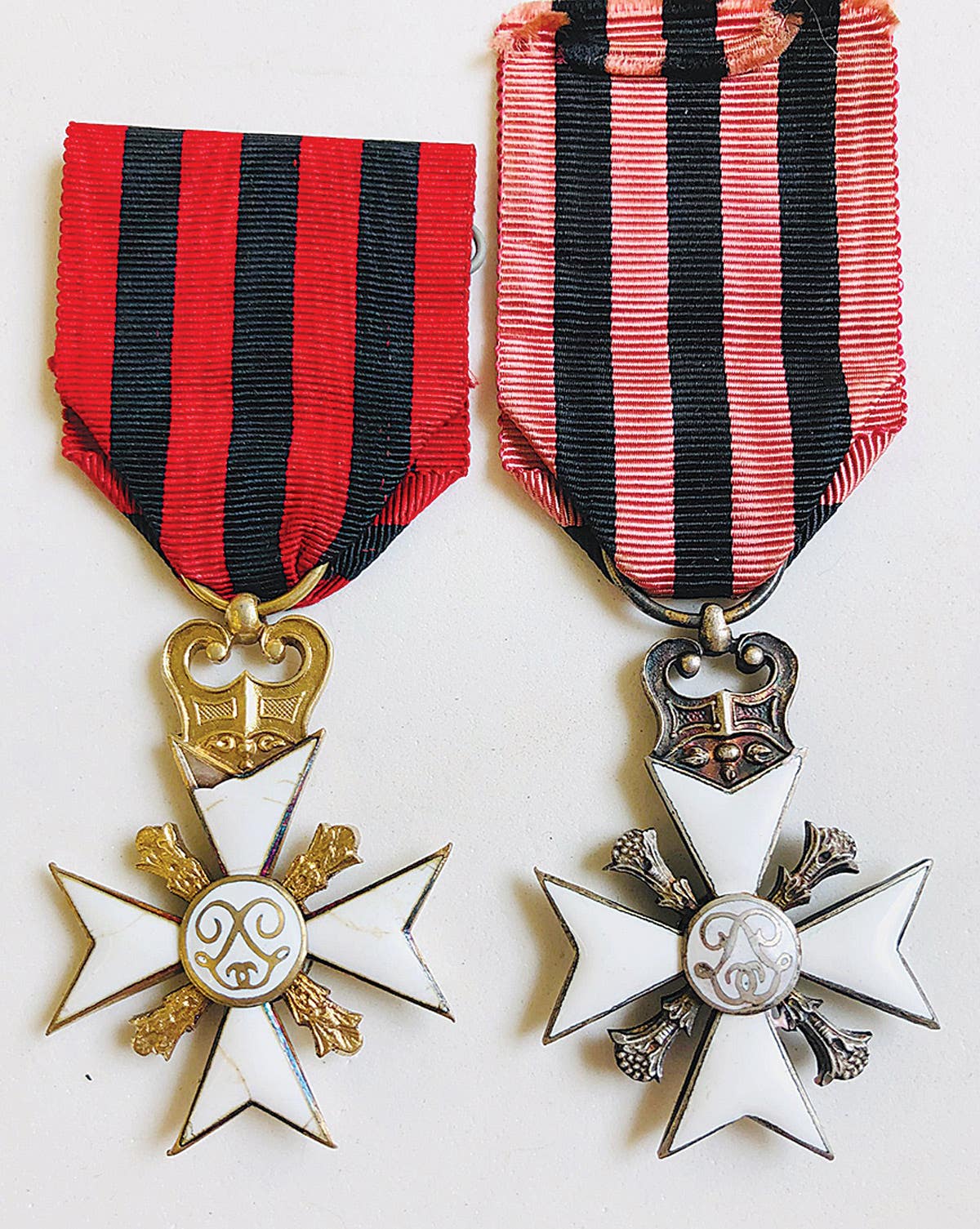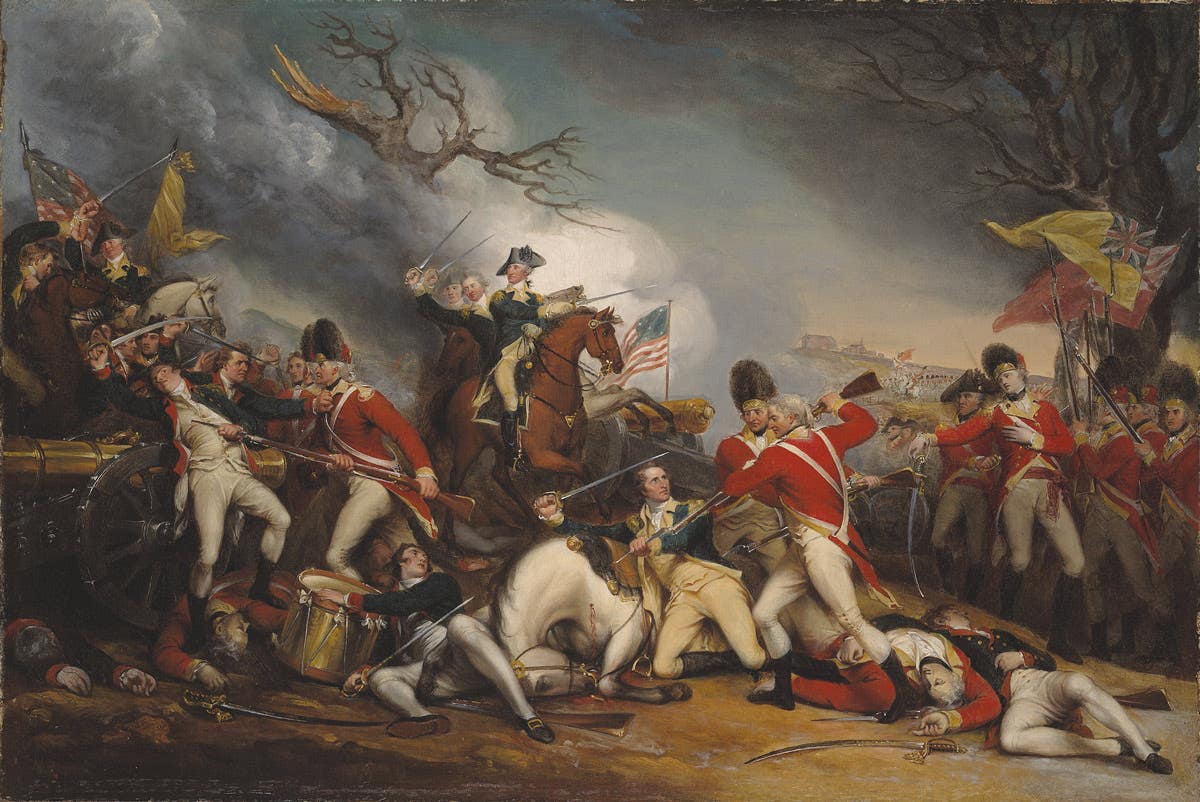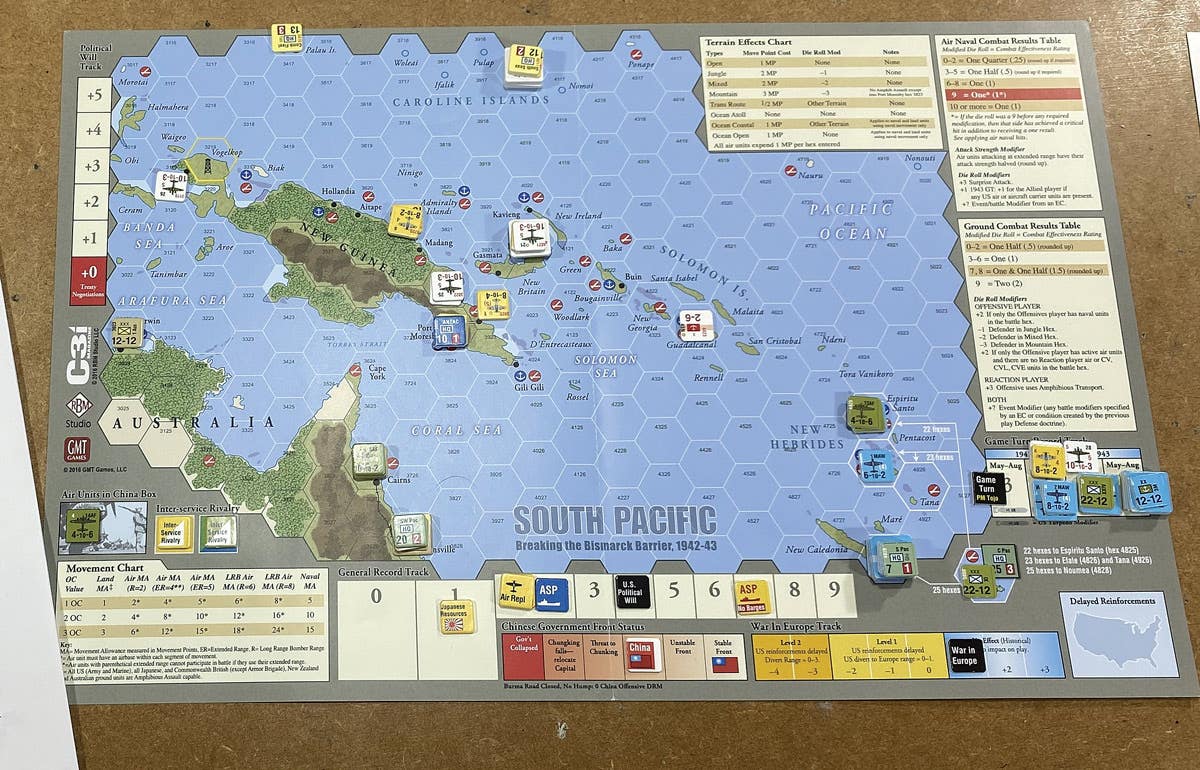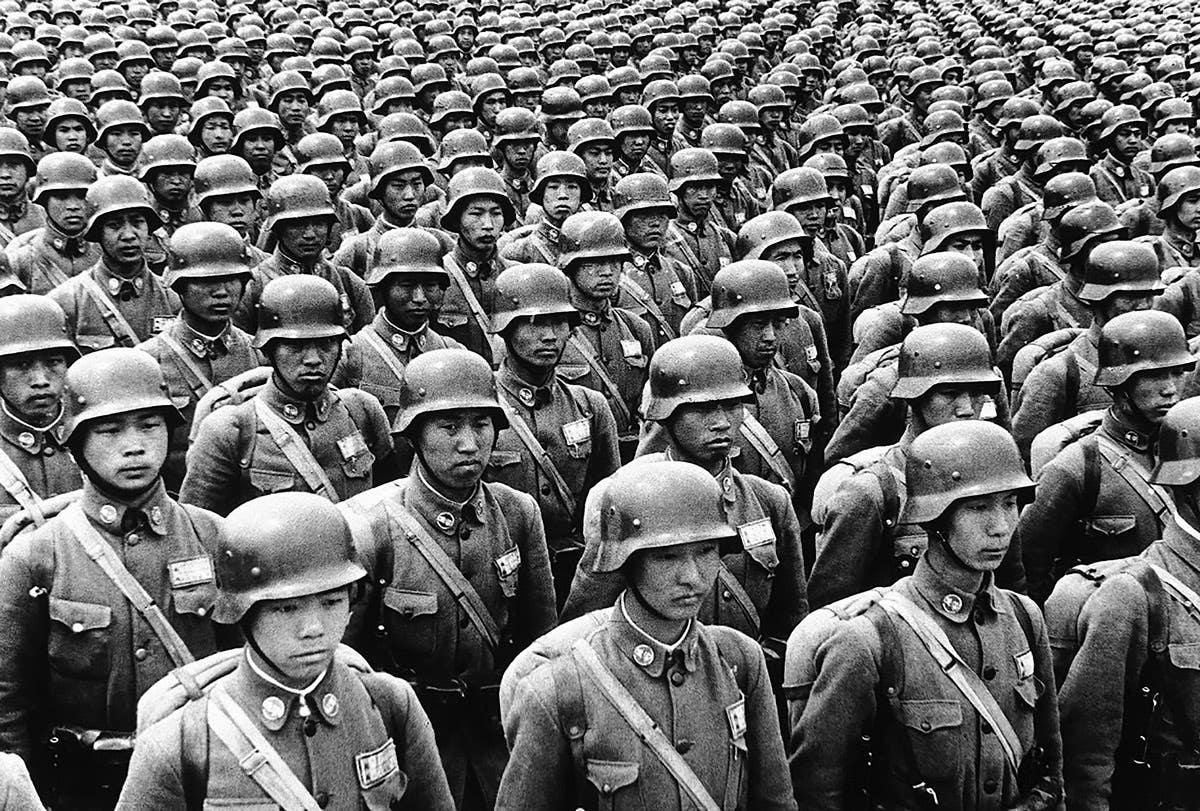Inside Look: South African Polo Helmets
Worn by Rommel’s Afrikakorps? by Peter Suciu A debate continues about the origin of a particular pattern of sun helmet. While the design of the so-called “polo style helmet” used…
Worn by Rommel’s Afrikakorps?
by Peter Suciu
A debate continues about the origin of a particular pattern of sun helmet. While the design of the so-called “polo style helmet” used by the military forces of South Africa just prior to, during and just after WWII has long been attributed to the “Dutch” or just as often the “Dutch Army,” this style helmet was noted by this author as not being of Dutch origin. Nevertheless, examples exist that feature a 1940 date with a stamp indicating the helmets came from “Holland.” The helmets were apparently issued to the German Afrikakorps in North Africa.
Several books note the existence of the helmets, although a couple of questions have yet to be properly addressed. The most notable is that photographic evidence indicates that the pattern helmet was used, but it is worth noting that it is impossible to know which period photos of soldiers in North Africa are using the so-called “Holland” helmets and which may be using the South African-produced helmets that were likely captured at the Battle of Tobruk in 1941. Many South African collectors contend that all the helmets seen in action were likely of South African origin.
“I personally believe that the helmets worn by German Afrikakorps men were all captured at Tobruk amongst a lot of other South African kit,” says South African collector Dudly Wall, whose collection includes numerous WWII helmets. “Tobruk’s main garrison force at the time was the 2nd South Africa (SA) Division and vast quantities of British and SA kit was captured by the Germans.”
This, of course, doesn’t explain why examples exist with the Dutch “MOL NV” manufacturer stamp that contains the word “Holland,” as well. Several theories exist.
The first is that the Dutch, anticipating a war, may have considered modernizing its military forces. It wasn’t war with Germany, however, that was likely expected in 1939 and 1940. As history shows, the Dutch were caught off guard when the Germans invaded in May 1940.
The war that the Dutch expected was in the Far East against Japan. While mostly forgotten today, the Dutch fought against the Empire of Japan in its Dutch East Indies colonies. So, it is possible, the MOL NV had considered copying the pattern of sun helmet being produced by the South African Pith Helmet Industries Ltd. company of Pretoria, South Africa. To support this theory one only needs to see a South African “polo” sun helmet to recognize the strong resemblance to the Dutch M16-style helmet.
The problem with this theory, however, is there is no evidence that the Dutch had been in the process of updating its uniforms. The Dutch soldiers still wore the basic European theater uniform including the updated M1928 helmet with neck curtain.
The heavy wool uniforms were unsuitable for the tropical conditions. By mid-war, the Dutch forces were using Australian uniforms including bush hats.
So, while lack of evidence of tropical uniforms cannot be used as evidence itself, it isn’t actually needed because the Dutch naval forces did have summer uniforms including locally produced sun helmets. Why the Dutch would need MOL NV to produce sun helmets when there was also production of the items in the colonies?
Moreover, there is the issue that the helmets were stamped “Holland,” which the Dutch likely would not have stamped for their own equipment. While Americans may inaccurately call the nation “Holland,” it is in fact the Netherlands with Holland being a region. This suggests the stamps were only added after the helmets were captured by Germans as an export item.
While an example of the “Dutch” helmet appears in Ken Niewiarowicz’s book, Germany’s Combat Helmets, 1933-1945: A Modern Study (2009: R. James Bender Publishing, San Jose, CA), the author noted, “At this point I don’t believe the helmets were ever intended for the Dutch Army.”
THE POLO CONNECTION
There is another possibility. Perhaps the helmets were not intended for the Dutch military, but rather, Dutch colonists—and possibly for the sport of polo. The South African helmets have long been referred to as “polo style.” In the early 1930s, the South African military was still using the British Wolseley pattern sun helmet, which proved to be impractical for bush warfare as it had a large brim. Additionally, South Africa had a tenuous relationship with Great Britain and numerous times looked to leave the Commonwealth, so no doubt the Wolseley helmet was seen as an unnecessary tie.
The replacement was the “polo” pattern helmet that was based on actual polo helmets and made by SAPHI. In essence, a military version of the civilian helmet was produced.
But the connection to polo goes further back to the Victorian Era when polo was played by many British Army Regiments. Numerous books note that polo was a popular sport with British officers, and sun/pith helmets were primarily worn.
In fact, many of the same companies that provided military headdress also made polo helmets, including Herbert Johnson, a hatter that still makes dress caps and berets. During the 1890s, the company made sun helmets and polo caps, and was just one of several companies that introduced a polo pattern sun helmet. The connection to polo and sun helmets is highlighted in the book The Evolution of Polo by Horace A. Laffaye, McFarland (2009, Pages 218-219):
Following the implementation of an order by Gen. Sir Frederick Roberts, commander-in-chief, that all officers must wear a helmet during play, the pith helmet became a favorite of polo players in India. They provided shade to the eyes, and the thick brim extended the entire circumference of the helmet. The polo helmet or cap was a derivation of the old hunting cap; its design was credited to Gerald Hardy, a player of repute. The protection was provided by layers of pith and cork, with holes provided for ventilation.
The polo cap style became prevalent in America, while the pith helmet remained the staple of British players until after WWII.
Three distinct versions of the South African polo helmet are known to exist. First, there is the SAPHI pattern, of which the “Dutch” examples seem to fall into; the British made versions, that seem to lack a ventilator cap on the top; and finally a Canadian made version based on the American Hawley pressed fiber sun helmet.
What is interesting about the British version is that they feature a liner that includes a tension string that weaves in and out of the head band and circumnavigates the body of the helmet. This liner was first patented by the Charles Owen & Company for used in the Wolseley helmet in 1923. The company is still around today as one of the premier makers of polo helmets in the United Kingdom.
It is also notable that polo was played between British, Indian, South African and Canadian clubs throughout the 1930s, Five teams took part in the 1936 Berlin Olympic Games, with Argentina besting the favored British team. Polo was not widely played in the Netherlands in the 1930s and didn’t actually become a popular sport there until the 1980s. It was, however, popular in the Dutch East Indies in the years leading up to WWII. According to the Nusantara Polo Club:
1937 marks the start Indonesian Polo history as Batavia Polo Club is established at Jakarta’s premiere LapanganBanteng. The founder of Batavia Polo Club was Dutch, the first game played was against Malayan Polo Team. As the Second World War breaks and Indonesia is occupied by Japan, Batavia Polo Club disintegrated.
There is one last piece of evidence to consider. Polo was played, not only in the Olympics, but also in what was then known as the Far East Games, an Asian multi-sport competition first held in 1912. Originally, the games were between China and Japan. Eventually, these expanded to the colonies as well, with the Dutch East Indies joining the games in 1934. Games were scheduled to take place in the summer of 1940 but cancelled when WWII broke out. As it happens, several competitive nations/colonies, including the Dutch East Indies, were scheduled to compete in polo.
Even if the helmets were intended for polo, it is clear that many did find their way onto the battlefield where these were used as sun helmets. British made polo/sun helmets were also used by the Gideon Force, which included the Free Ethiopian Forces who helped liberate their country from Italian occupation in 1941.
This is not the only connection between sports equipment and the military. The American M1 helmet liner suspension is based on the Riddell design for football helmets, and said helmets were considered by General George S. Patton as being ideal for tankers. The same style football helmets were known to have seen use as training helmets for American paratroopers. So sun helmets for polo is just a forgotten bit of history.
Peter Suciu is author of the book Military Sun Helmets of the World, and he is executive editor of KineticShift.com, that covers innovation in fitness and sports equipment.
Peter Suciu is a freelance journalist and when he isn't writing about militaria you can find him covering topics such as cybersecurity, social media and streaming TV services for Forbes, TechNewsWorld and ClearanceJobs. He is the author of several books on military hats and helmets including the 2019 title, A Gallery of Military Headdress. Email him and he'd happily sell you a copy!



